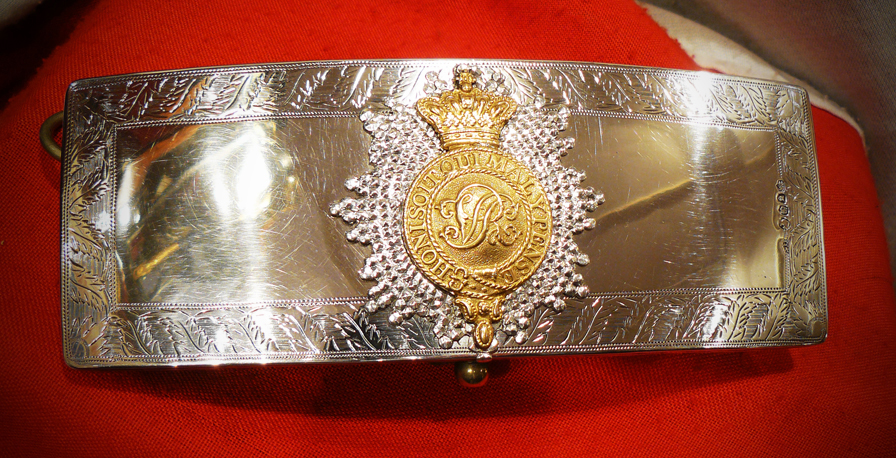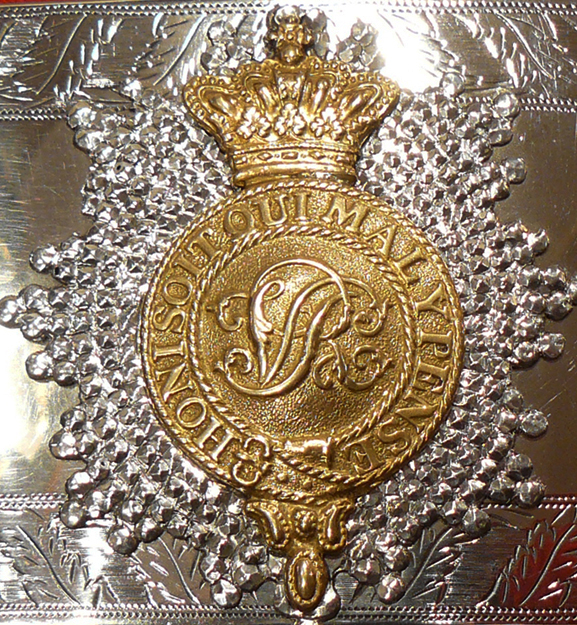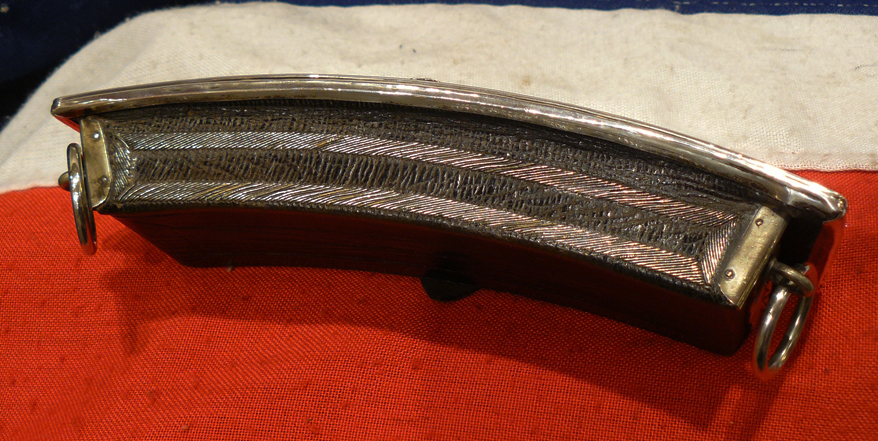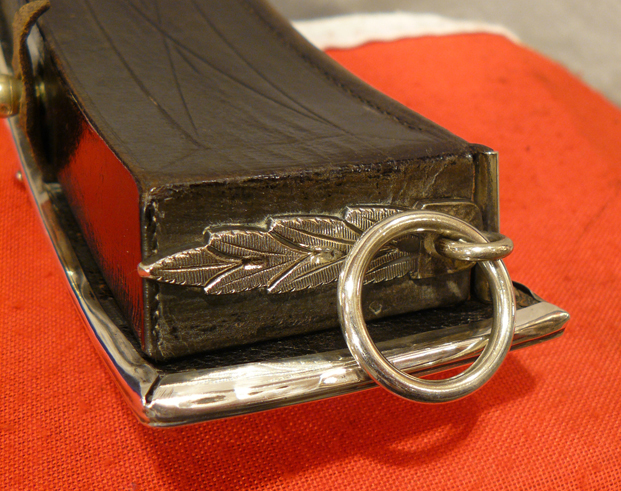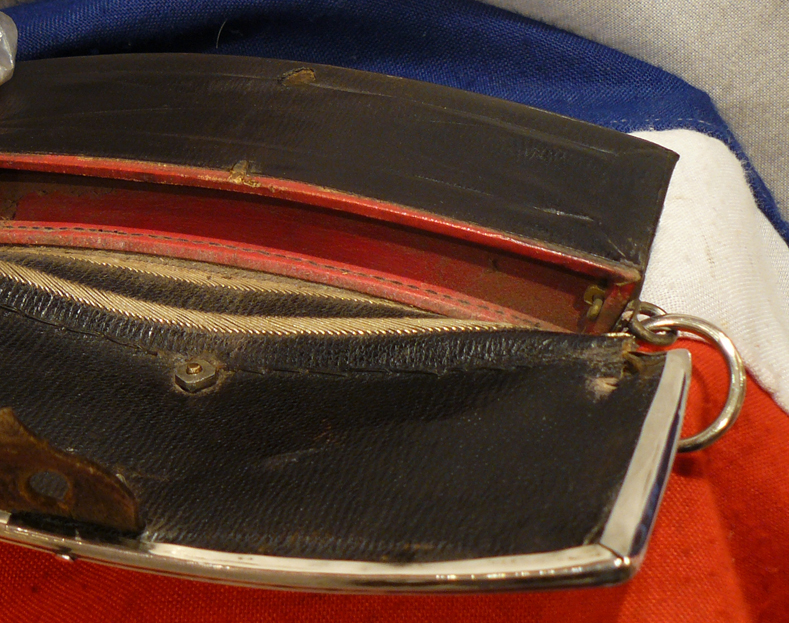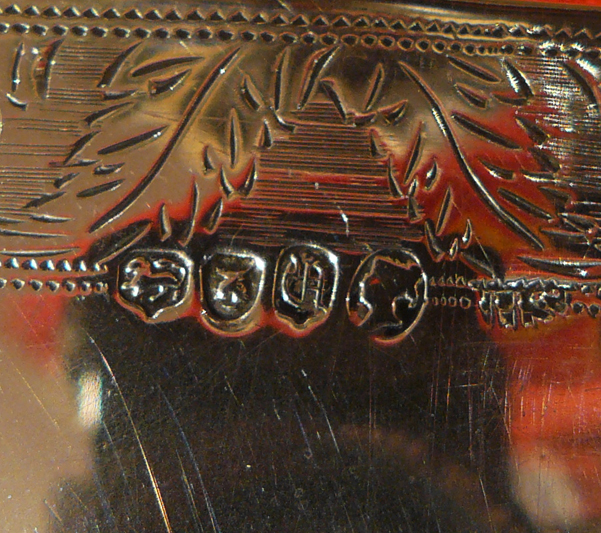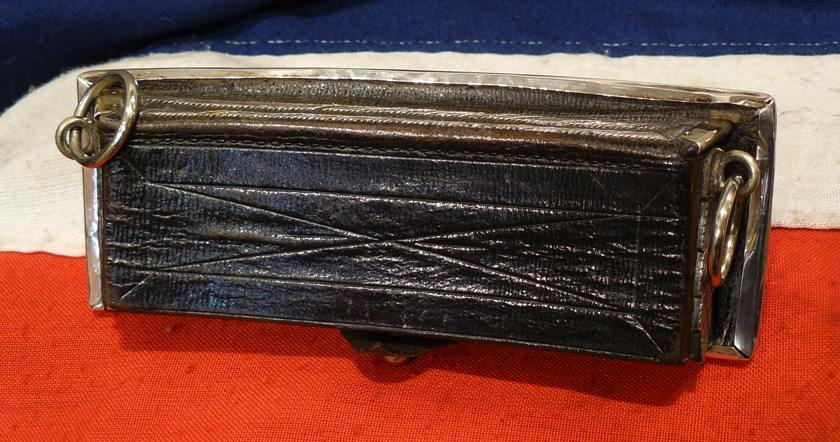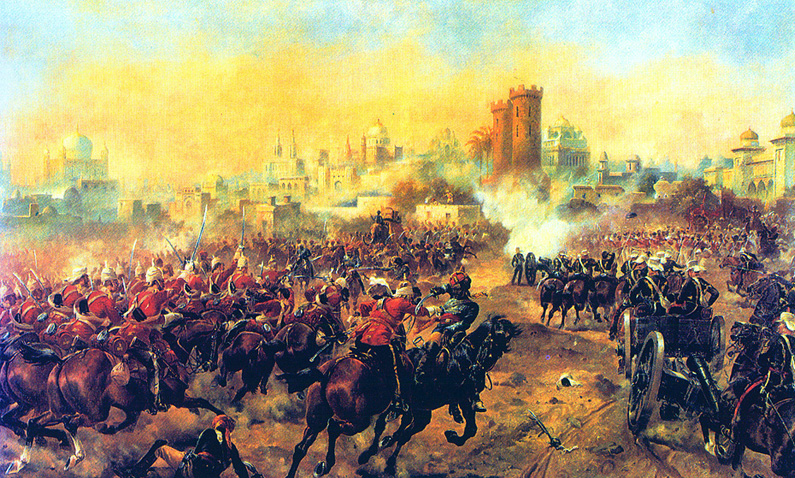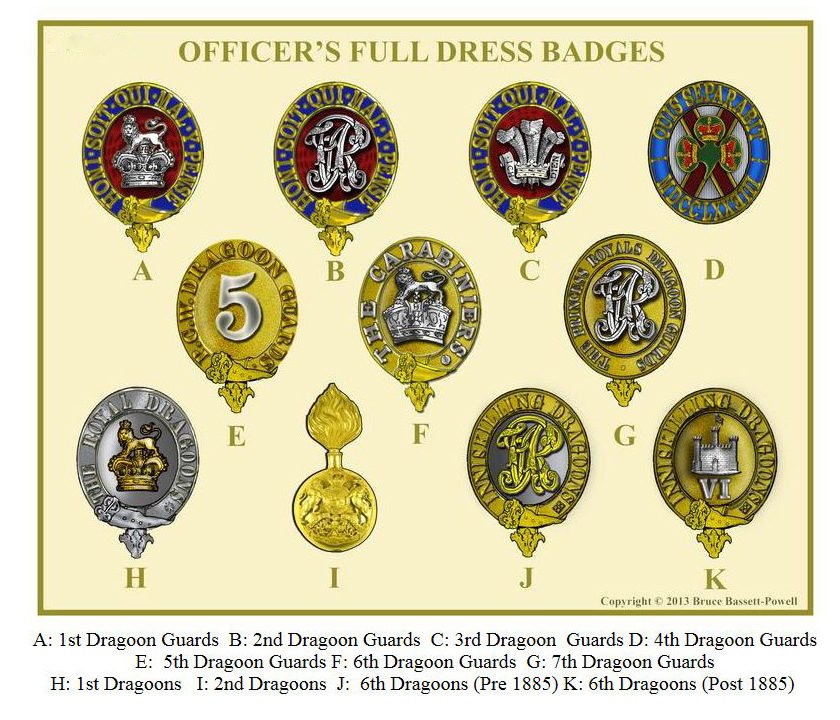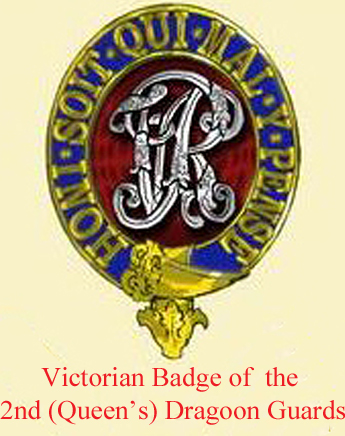A Stunning & Superb Condition, Original Indian Mutiny Period Elite 2nd Dragoon Guards Officer's Silver Pouch
Hallmarked silver and dated to 1855. This was acquired from a museum grade collector of Waterloo artefacts and also 2nd Dragoon Guards artefacts, from the 19th century. We also acquired the regimentally marked 2nd QDG 1796 Napoleonic Wars pistol code number 22648 {now sold}. A dress officer’s finest grade silver pouch, in absolute pristine condition. Quite simply a wonderful artefact of British elite cavalry uniform regalia, that is also an 'object d'art' from one of the most beautiful and finest quality military uniforms ever worn.
Hallmarked London silver, dated 1855. Picture 10 in the gallery shows the pre 1885 2nd QDG full dress badge, when worn on their helmet the garter belt motto would change to the words Queen's Dragoon Guards, on the 1855 pouch it has "Honi Soit Qui Mal y Pense" as with the full dress badge but surmounted by a crown.
Rectangular curved box with silver lid, with cast silver supports and rings and lined with silver wire bullion bands. Box covered in tooled black leather lining with morocco red leather trim. The silver cover bears an engraved acanthus leaf border, bearing at its centre the elite royal cavalry badge, of a gold, crowned garter star, emblazoned with royal motto "Honi Soit Qui Mal Y Pense", and the central relief VR cypher of Queen Victoria.
In 1857 the 2nd the Queen's Bays, were sent to India for the Indian Mutiny, and this pouch would have been worn in this conflict by its officer owner.
After the recapture of Delhi the focus of the conflict was on Lucknow, 150 miles northeast of Allahabad. Sir Colin Campbell had already rescued the beleaguered garrison there but had not prevented the rebels from capturing the city and holding it with 130,000 men. Campbell now had a force of 20,000 to march on Lucknow. The rebels made several sorties out of the town to engage with them. On 6 March two squadrons of the Bays made a charge under the command of Major Percy Smith. This got out of control over broken ground and three men were killed, including Major Smith. They were unable to retrieve his body. One corporal was unhorsed and unable to remount, so was cut to pieces. Six other men were wounded and many of the horses suffered terrible wounds from the mutineers' swords and bayonets. Lucknow was recaptured by 16 Mar 1858, but 20,000 rebels escaped. The cavalry units were already scattered around the countryside chasing small parties of rebels so were not in position to block the mass exodus on 16 Mar. "We came on bodies of Cavalry and Infantry of the enemy. Bays where ordered to the front to charge and pursue! Away we went as hard as possible, Major Smith and I leading. We did not stop for three miles, cutting down and pursuing the mutineers right up to Lucknow, and across the river. We are told the most gallant. Smartest, though somewhat rash thing that was done before Lucknow".
In a battle at Nawabganj, east of Lucknow, 2 squadrons under Major Seymour were part of the cavalry element of Hope Grant's 3,500-strong column that attacked a force of 15,000 mutineers entrenched at a river crossing. They made a 12 mile night march to surprise the rebels. There was a three hour battle during which the British were surrounded but they turned the tables and drove the enemy off, having killed 600 and captured 9 guns. The British lost 67 killed or wounded in action, but 33 died of sunstroke and 250 ended up in hospital. All members of the regiment had suffered from fever or sunstroke, both proving fatal in many cases. The CO, William Campbell died on 6 July 1858, after being promoted to brigadier. The second lieutenant-colonel, Hylton Brisco had suffered with fever and retired in September. Because of the fatalities and sickness, officers were gaining promotion without purchase. Captain William Henry Seymour, whose letters home provide valuable information on the Bays in India, attained his majority and lieutenant-colonelcy so that within 8 months he had gone from captain to CO of the regiment.
7.5 inches x 3.5 inches x 1.75 inches deep at the curve. 8.75 ounces weight total.
Code: 22333
1495.00 GBP

